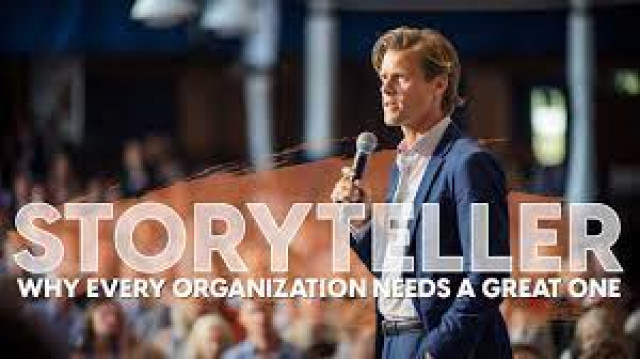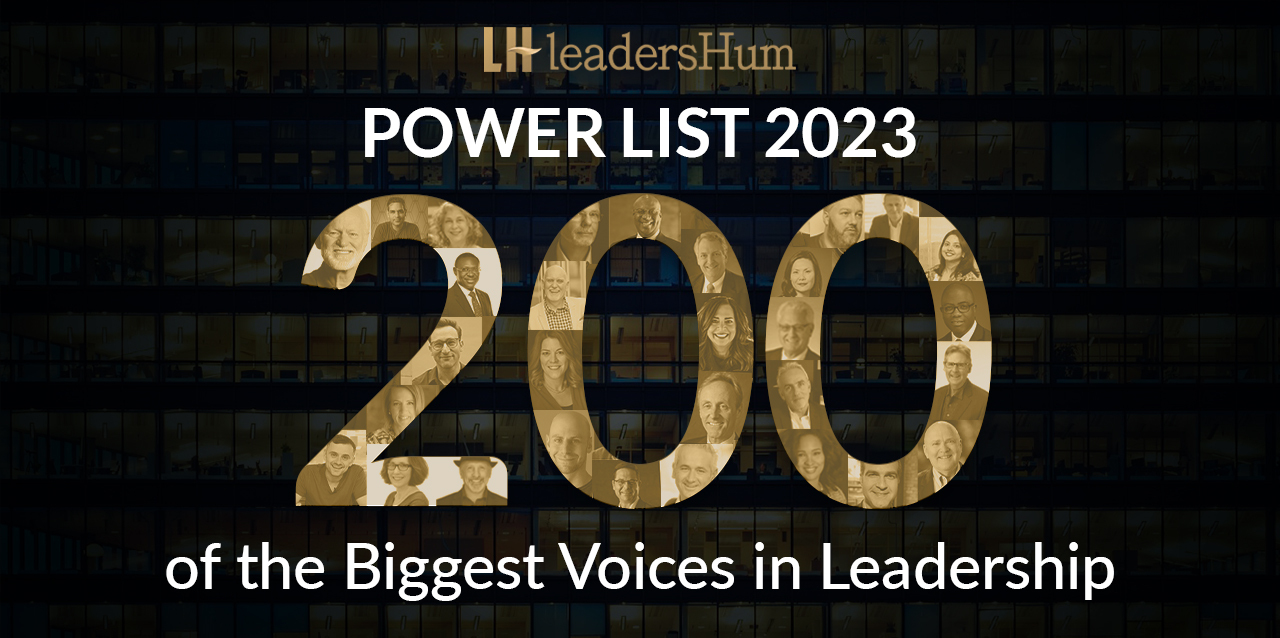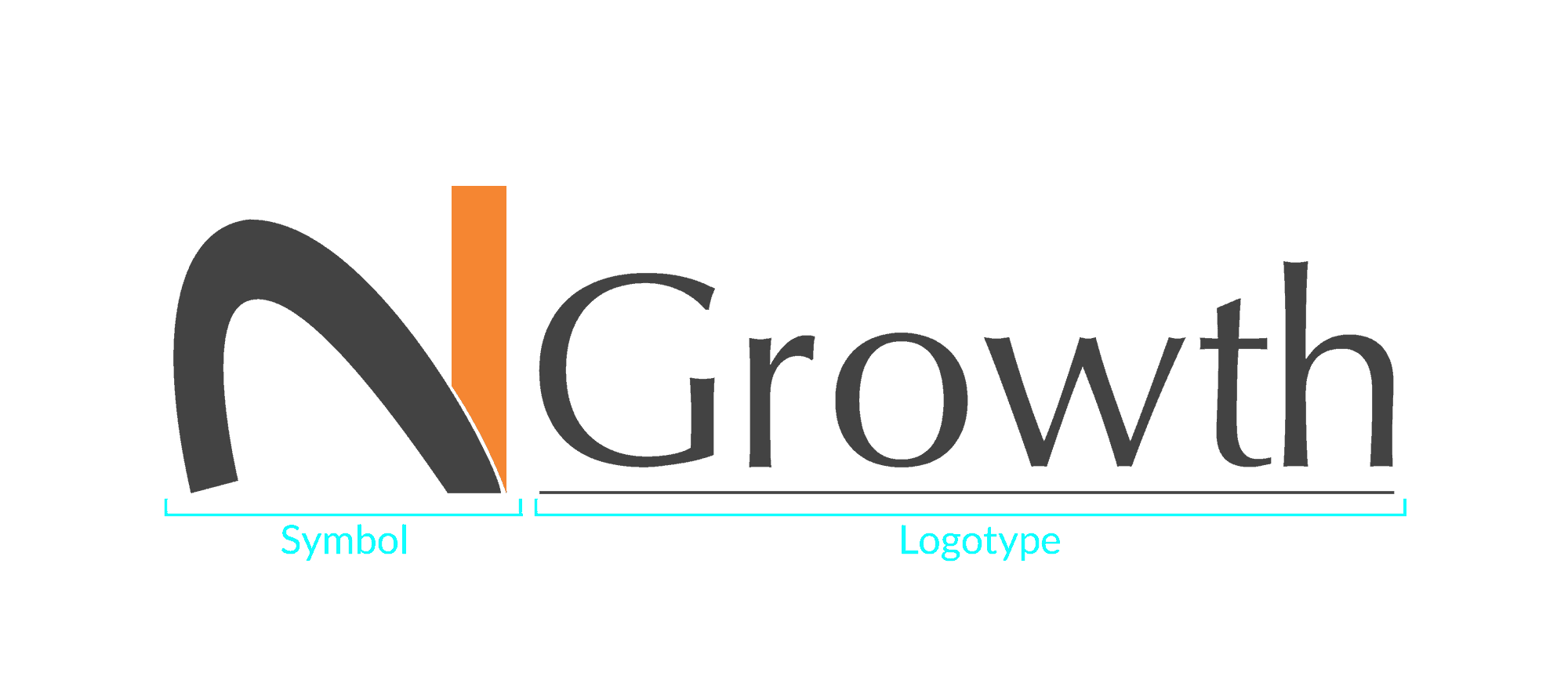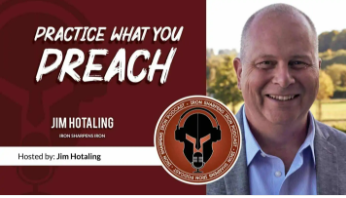

I am passionate about providing strategic executive leadership in human capital, utilizing results-orientated knowledge, skills, and abilities to think critically and lead successfully within any operating environment. His history of success in environments demanding crisis management and problem-solving skills, organizational development, team building, and uncompromising integrity make him uniquely qualified to serve in these roles. Jim has been named by LeadersHum as one of the world's top 40 change management gurus and is an active member of the Forbes Coaches Council.
I served as the Command Chief Master Sergeant of the Air National Guard, serving as a principal adviser to senior executives within the U.S. Department of Defense. Jim has an international reputation for being a dynamic, driven professional with over 30 years of leadership, management, operational, and contingency experience in government and private sectors. Before being elevated to executive leadership roles, his 20+ years within Special Forces gave him a unique perspective that translates into being a subject matter expert in Human-Centric leading and resilience. He has served in senior leadership positions with subsequent responsibility for personnel, resources, and institutional focus, directly affecting programs to drive business results. He is an accomplished international public speaker and lead instructor. He possesses broad experience collaborating with senior executive leaders and engaging international partners.
Jim has also hosted a podcast, The Iron Sharpens Iron Leadership Movement, a series of podcasts and videos that will give you a focused set of ideas applicable to your personal and professional life. He believes the more significant focus you spend on your " tools " and how you "forge" your relationships and presence, the stronger the others become. This movement will showcase that to make yourself better; there is a mutual benefit to making others better through mentorship, followership, and leading.
Jim holds a master's degree in Leadership from Trident University, a Bachelor of Arts in Business Communications and Influence from Jones International University, an Associate in Airway Science, and a Professional Managers Certification from the Community College of the Air Force.
Available For: Advising, Consulting, Influencing, Speaking
Travels From: Vermont
Speaking Topics: Leadership, Resilience, Top Team Effectiveness
| James Hotaling | Points |
|---|---|
| Academic | 0 |
| Author | 665 |
| Influencer | 99 |
| Speaker | 0 |
| Entrepreneur | 0 |
| Total | 764 |
Points based upon Thinkers360 patent-pending algorithm.
 Eclipsing Rolodex Firms: Welcome to the Vanguard of Executive Search
Eclipsing Rolodex Firms: Welcome to the Vanguard of Executive Search
Tags: Change Management, Coaching, Leadership
 The N2Growth Difference: Coaching or Consulting to Meet Your Needs
The N2Growth Difference: Coaching or Consulting to Meet Your Needs
Tags: Culture, Leadership, Management
Tags: Change Management, Coaching, Leadership
Tags: Change Management, Coaching, Leadership
 The Pinnacle of Performance: Fine-Tuning Leadership with Executive Coachee Programs
The Pinnacle of Performance: Fine-Tuning Leadership with Executive Coachee Programs
Tags: Change Management, Culture, Leadership
 How To Maintain A Strong Company Culture When Key Leaders Depart
How To Maintain A Strong Company Culture When Key Leaders Depart
Tags: Change Management, Leadership, Culture
 20 Ways To Detoxify A Sales Team’s Work Environment
20 Ways To Detoxify A Sales Team’s Work Environment
Tags: Change Management, Leadership, Sales
 How To Prevent Workplace Conflict From Impacting Your Team
How To Prevent Workplace Conflict From Impacting Your Team
Tags: Change Management, Leadership
Tags: Change Management, Coaching, Leadership
Tags: Change Management, Coaching, Leadership
Tags: Change Management, Coaching, Leadership
Tags: Change Management, Coaching, Leadership
Tags: Change Management, Coaching, Leadership
 Executive Storytelling: Why Every Organization Needs a Great Story
Executive Storytelling: Why Every Organization Needs a Great Story
Tags: Change Management, Coaching, Leadership
 How To Learn Something Complicated Faster
How To Learn Something Complicated Faster
Tags: Change Management, Leadership
 15 Practical Ways To Strengthen Self-Control And Willpower
15 Practical Ways To Strengthen Self-Control And Willpower
Tags: Change Management, Leadership
Tags: Change Management, Coaching, Leadership
Tags: Change Management, Coaching, Leadership
Tags: Change Management, Coaching, Leadership
Tags: Change Management, Coaching, Leadership
Tags: Change Management, Coaching, Leadership
Tags: Change Management, Coaching, Leadership
Tags: Change Management, Coaching, Leadership
 How To Author A Book: 17 Tips For Busy Executive Thought Leaders
How To Author A Book: 17 Tips For Busy Executive Thought Leaders
Tags: Change Management, Leadership
 15 Human-Centric Ways For Leaders To Promote High Performance
15 Human-Centric Ways For Leaders To Promote High Performance
Tags: Change Management, Leadership, Customer Experience
 Powerlist of the top 200 voices in leadership
Powerlist of the top 200 voices in leadership
Tags: Coaching
Tags: Coaching
Tags: Change Management, Coaching, Leadership

Tags: Leadership, Culture, Change Management
 16 Ways Companies Can Nurture The Next Generation Of Leaders
16 Ways Companies Can Nurture The Next Generation Of Leaders
Tags: Change Management, Leadership, Management
 14 Smart Ways For Businesses To Seek Out More Diverse Candidates
14 Smart Ways For Businesses To Seek Out More Diverse Candidates
Tags: Change Management, Leadership, Management
Tags: Culture, Leadership
Tags: Management, Leadership, Change Management
 Mindset Moments- Iron Sharpens Iron
Mindset Moments- Iron Sharpens Iron
Tags: Leadership

Tags: Change Management, Culture, Leadership
 Practice what you preach with Jim Hotaling
Practice what you preach with Jim Hotaling
Tags: Leadership, Culture, Change Management

Tags: Change Management, Leadership, Management
Tags: Leadership, Culture, Change Management

Tags: Change Management, Leadership, Management
Tags: Leadership, Culture, Change Management

Tags: Change Management, Leadership, Management
Tags: Leadership, Culture, Change Management

Tags: Change Management, Leadership, Management
Tags: Leadership, Culture, Change Management

Tags: Change Management, Leadership, Management
Tags: Leadership, Culture, Change Management

Tags: Change Management, Leadership, Management
Tags: Leadership, Culture, Coaching

Tags: Change Management, Leadership, Management
Tags: Leadership, Culture, Change Management

Tags: Change Management, Leadership, Management
Tags: Leadership, Culture, Change Management

Tags: Change Management, Leadership, Management
Tags: Leadership, Culture, Change Management

Tags: Change Management, Leadership, Management
Tags: Leadership, Culture, Change Management

Tags: Change Management, Leadership, Management
Tags: Leadership, Culture, Change Management

Tags: Change Management, Leadership, Management

Tags: Change Management, Culture, Leadership

Tags: Change Management, Culture, Leadership

Tags: Change Management, Culture, Leadership

Tags: Change Management, Culture, Leadership

Tags: Change Management, Culture, Leadership

Tags: Change Management, Culture, Leadership

Tags: Change Management, Culture, Leadership

Tags: Change Management, Culture, Leadership

Tags: Change Management, Culture, Leadership

Tags: Change Management, Culture, Leadership

Tags: Change Management, Culture, Leadership

Tags: Change Management, Culture, Leadership

Tags: Change Management, Culture, Leadership

Tags: Change Management, Culture, Leadership

Tags: Change Management, Culture, Leadership

Tags: Change Management, Culture, Leadership

Tags: Change Management, Culture, Leadership

Tags: Change Management, Culture, Leadership

Tags: Change Management, Culture, Leadership

Tags: Change Management, Culture, Leadership

Tags: Change Management, Culture, Leadership

Tags: Change Management, Culture, Leadership

Tags: Change Management, Culture, Leadership

Tags: Change Management, Culture, Leadership

Tags: Change Management, Culture, Leadership
 Rising Above: The Call for Senior Leaders to Embrace Strategy Over Tactics
Rising Above: The Call for Senior Leaders to Embrace Strategy Over Tactics
In today’s fast-paced business landscape, leaders frequently face various tactical and operational challenges. When it comes to managing day-to-day operations and responding to unforeseen problems, the frenetic pace of the immediate can become a zone of comfort. A significant number of future leaders have gained professional experience and earned their stripes in these trenches, becoming masters of this tactical art. They have proven adept at navigating these waters, contributing to their rise through the ranks. Nevertheless, there is an urgent requirement for a shift in perspective as they rise through the ranks to senior leadership roles.
It’s a common scene: leaders deeply engrossed in the nitty-gritty details, missing the larger picture. But herein lies the crux: senior leadership isn’t about staying within one’s comfort zone, no matter how successful it’s been in the past. When I encounter leaders in this position, I offer them advice that may seem simplistic but is profoundly transformative: “Get your head out of the weeds and look up at the horizon.” Why use this perspective shift? Let’s dive deeper.
The horizon provides a wide and expansive perspective. When a senior leader raises their eyes to this level, a profound change takes place: things begin to move at a more measured pace. The horizon perspective enables leaders to anticipate changes, trends, and potential obstacles from a distance rather than being taken aback by unexpected challenges. It’s the equivalent of a driver being able to see a bend in the road from a distance and making the necessary adjustments well in advance, as opposed to swerving at the last minute.
Keeping one’s eyes on the horizon is not to ignore what is happening in the here and now; instead, it is to gain perspective on what is permanent and what is ephemeral. Leaders can recognize patterns, establish connections, and strategically position their organizations for long-term success when they keep the big picture in mind and concentrate on it.
This elevated perspective aligns with the essence of senior leadership: being strategic. The tactical details, while essential, should not consume a senior leader’s primary focus. Instead, delegating these tasks to competent team members will free up time and mental space for strategic thinking. Becoming more strategic entails thinking ahead, envisioning the future, and crafting pathways to achieve it. It involves not just reacting to changes but proactively driving change. This proactive approach allows for informed decision-making, better risk management, and the ability to seize opportunities before competitors even spot them.
Conclusion
Embracing the horizon perspective is more than just a leadership tactic; it’s a mindset. As leaders progress in their careers, the challenges they face evolve. While tactical mastery might have propelled them to senior roles, strategic foresight will define their legacy. For every senior leader ensnared in the weeds, remember: the horizon holds your future. Lift your gaze, embrace strategy over tactics, and lead your organization to new heights.
Tags: Change Management, Coaching, Leadership
 The Power of Healthy Disagreement: Strengthening Leadership Teams
The Power of Healthy Disagreement: Strengthening Leadership Teams
As a senior executive coach, I have had the privilege of working with numerous leadership teams from various industries and backgrounds. One of the most powerful lessons I've learned over the years is the value of healthy disagreement within these teams. It may seem counterintuitive, but embracing diverse perspectives and differing opinions can foster innovation, prevent complacency, and ultimately drive superior organizational outcomes.
In our pursuit of success, it's natural to surround ourselves with like-minded individuals who share our vision and goals. However, while unity is essential, unanimity is not always beneficial. When everyone on your team consistently agrees with you, it may create a comfortable echo chamber where innovative ideas struggle to take root and grow. True innovation thrives in an environment where ideas are challenged, scrutinized, and refined through constructive disagreement.
It is fundamental to encourage open dialogue and cultivate an atmosphere where team members feel secure expressing their diverse perspectives. When individuals feel heard and valued, they become more engaged and willing to contribute their unique insights. This open exchange of ideas creates a wellspring of creativity and critical thinking, leading to breakthrough solutions and strategies.
In the dynamic landscape of the business world, embracing healthy disagreement becomes paramount. In an era where 'iron sharpens iron,' it's crucial to recognize that divergent viewpoints can provide the necessary tension to stimulate growth and development. As leaders, we must avoid the trap of seeking constant validation and surround ourselves with individuals who challenge us to think differently and consider alternative approaches.
The benefits are manifold when constructive disagreement becomes a norm in your leadership team. It allows you to identify potential blind spots and make more informed decisions. Your team becomes more adaptable, capable of swiftly navigating through uncertainties and challenges. Moreover, this environment of trust and respect fosters collaboration and builds strong bonds among team members, making the team more resilient in times of adversity.
As you aim to cultivate dynamic, innovative, and high-performing teams, consider the following steps to harness the power of healthy disagreement:
Lead by Example: Demonstrate your openness to diverse viewpoints and encourage feedback from your team. Show that you value critical thinking and that disagreements are not met with judgment but seen as opportunities for growth.
Establish Psychological Safety: Create an environment where team members feel safe to voice their opinions without fear of retribution. Encourage curiosity and celebrate the act of asking challenging questions.
Set Common Goals: Ensure that your team shares a clear sense of purpose and common goals. When everyone understands the broader objectives, disagreements become focused on finding the best path forward rather than personal conflicts.
Foster Active Listening: Emphasize the importance of active listening among team members. Encourage them to listen empathetically to different viewpoints and consider them thoughtfully before responding.
Resolve Conflicts Constructively: When disagreements arise, address them promptly and constructively. Encourage open dialogue to find resolutions accommodating various perspectives and contributing to better decision-making.
Encourage Idea Sharing: Regularly hold brainstorming sessions or innovation workshops where team members can freely share their ideas and challenge each other's assumptions.
You can transform your leadership team into a powerhouse of innovation and collaboration by embracing healthy disagreement. Remember, it's not about winning arguments but finding the best solutions leading to superior organizational outcomes.
Whether you are a seasoned leader or just beginning your leadership journey, I hope this video has provided valuable insights to enhance your leadership skills. Let's create an environment where healthy disagreement is celebrated, and creativity knows no bounds.
Here's to building stronger, more resilient organizations through the power of healthy disagreement.
Tags: Change Management, Coaching, Leadership
 Embracing the Power of Artificial Intelligence: Balancing Insights and Human Touch
Embracing the Power of Artificial Intelligence: Balancing Insights and Human Touch
In the ever-evolving landscape of technology, few advancements have captured our collective imagination quite like artificial intelligence (AI). From its potential to revolutionize industries to its impact on everyday life, AI has become a topic of both fascination and concern. Recently, I had a thought-provoking conversation about AI, specifically regarding its role in leadership assessments and executive coaching. In this blog post, I aim to provide insights and illuminate the balance between AI-driven insights and the irreplaceable human touch in these domains.
The Power of AI: As someone deeply involved in leadership assessments and executive coaching, I can attest to the immense power of AI in augmenting our decision-making processes and enhancing efficiency. One particular AI tool I employ, Chat GPT, has proven invaluable in providing data-driven insights and enabling me to make better-informed decisions. The capabilities of AI are genuinely remarkable, and we should embrace the opportunities it presents.
The Importance of Human Connection: While AI offers tremendous advantages, it is crucial to recognize that it will never replace the profound understanding and human connection that comes from genuine interactions. Despite its ability to analyze data and draw conclusions, AI lacks the context and empathy from face-to-face conversations. This is where the role of advisors and experts becomes paramount.
Understanding the Context: Consider an executive assessment scenario where AI identifies an individual who doesn't handle stress well. While this insight is valuable, it is essential to delve deeper and gather additional context. Engaging in personal conversations and spending quality time with the individual allows us to uncover invaluable information. For instance, they may share that although they used to struggle with stress, they have since developed adequate coping mechanisms such as meditation, yoga, or even participating in triathlons. These personal narratives and unique experiences are invaluable and cannot be replicated by AI alone.
Striking a balance: The key lies in striking a balance between the benefits of AI and the inherent value of human judgment, empathy, and personal experiences. AI is a powerful ally, augmenting our abilities and providing data-driven insights. However, it is the combination of these insights with genuine human understanding that leads to optimal outcomes. Embracing AI while cherishing the human touch ensures we can navigate the future with wisdom and compassion.
Advice for the Future: In this age of rapid technological advancement, embracing AI as a tool for growth and progress is crucial. However, we must never allow it to overshadow the significance of human judgment and connection. By leveraging the strengths of AI alongside our empathy and understanding, we can unlock our full potential. Let us utilize AI to enhance our decision-making processes, but always remember that the fusion of data-driven insights and genuine human interaction truly empowers us.
Conclusion: Artificial intelligence has undoubtedly brought a new dimension to leadership assessments and executive coaching. While AI offers incredible capabilities, it should never replace the human touch and the rich understanding that emerges from personal connections. By striking a harmonious balance between AI-driven insights and human judgment, we can confidently navigate the complexities of the future. Embrace the power of AI, but always remember the timeless importance of empathy, context, and authentic human interaction.
Tags: Change Management, Coaching, Leadership
 Board Effectiveness vs. Compliance
Board Effectiveness vs. Compliance
A fully-facilitated board effectiveness solution can provide fresh insights and drive tangible outcomes year after year to achieve an effective board. This strategy is based on research and evidence-based principles, and a data-driven process is designed to provide you and your board with the insights needed to improve performance. The assessment is based on the Effective Boards framework, a proprietary research-based solution that provides a solid foundation for increasing the overall effectiveness of your board.
Individualized reports and feedback sessions for each board director, data-driven group working sessions tailored specifically for your board, and results and analysis presentations to help you understand key findings and focus areas for improvement are all part of the evaluation process. This process provides unprecedented data richness and ensures that each director has the plan to improve their performance and board career.
All board members will have secure access to a cloud-based board evaluation platform based on our proprietary research, which has been shown to produce positive results. Experienced consultants will conduct regular alignment sessions with key stakeholders and provide coaching tailored to the needs of your board directors.
The goal of this approach is not simply compliance but rather to provide you with insights and leadership expertise to help you create greater board effectiveness and overall performance. The methodology ensures maximum board member engagement and incorporates the most recent positive management science and psychology findings.
Finally, as a Board Chair, having a trusted partner who understands your challenges and can assist you in driving results is critical. A board effectiveness solution offers a data-driven, tailored approach that includes individualized reports and feedback sessions for each board director and a thorough evaluation of your board. The advisors will collaborate with you to identify areas for improvement and provide practical advice for success.
Tags: Change Management, Coaching, Leadership
Location: Virtual Fees: $750.00
Service Type: Service Offered